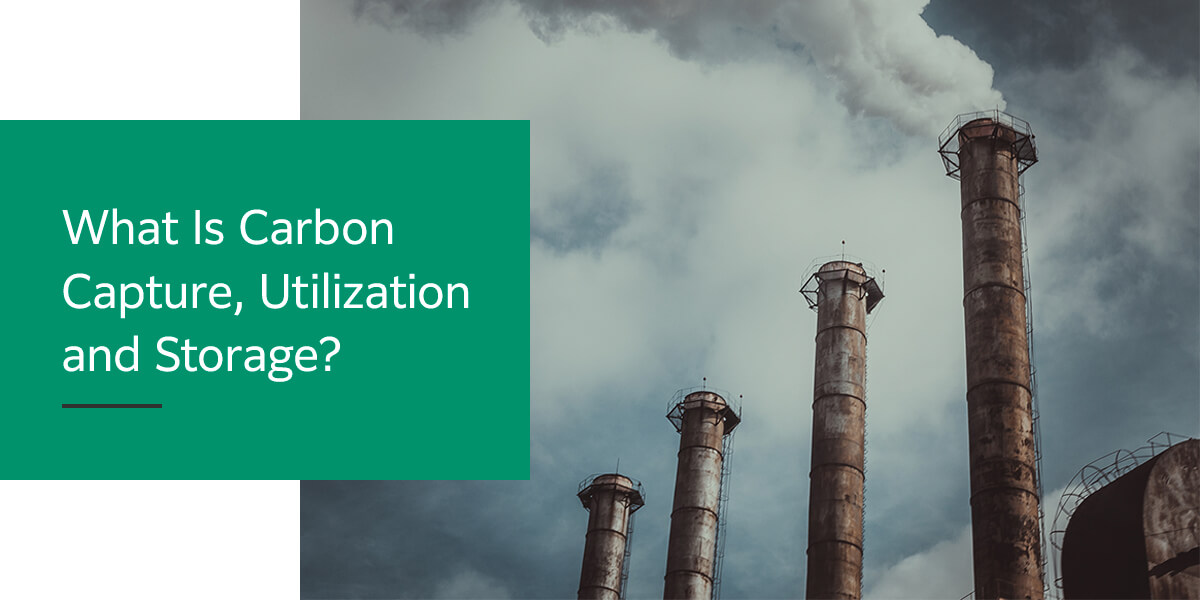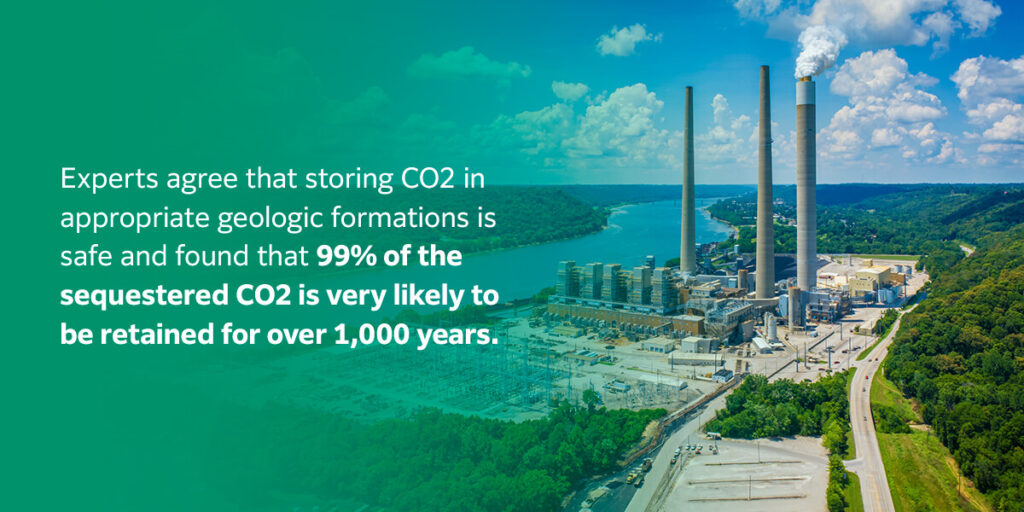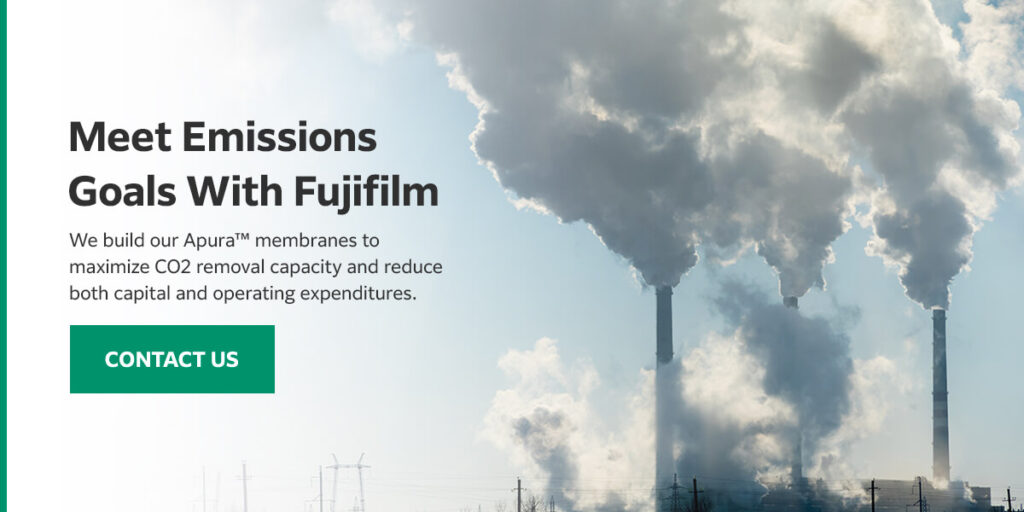
Jump to:
- What Is Carbon Capture Storage & Utilization?
- How Does Carbon Capture and Storage Work?
- Where Are Carbon Emissions Stored?
- The Future of CCUS
Carbon capture, utilization and storage (CCUS) play a vital role in combating climate change. As we work toward a cleaner atmosphere, CCUS allows us to contain and store the emissions from fuel generation and other industrial processes, building on efforts to reduce emissions in the first place.
The CCUS process can happen in several ways, and some are more viable in different applications than others. Let’s explore CCUS and what it means for industries like oil and gas.
What Is Carbon Capture Storage & Utilization?
Carbon capture and storage (CCS) and carbon capture and utilization (CCU) are two methods of removing carbon emissions from the atmosphere, often combined into the overarching field of CCUS. While reducing emissions is important, it isn’t always viable. Removing emissions is essential for meeting many carbon-zero or carbon-neutral goals on a global, national or organizational scale.
CCS refers to capturing the carbon dioxide (CO2) produced by burning fuel for power generation and other industrial activities and transporting it to storage facilities. Often, the CO2 is stored deep underground in rock formations, such as depleted oil and gas reservoirs or saline aquifers. Some notable CCS facilities include Endurance in the United Kingdom and the Citronelle Project in the United States.
CCU is the second part of the equation, where these emissions are put to good use in more economically beneficial ways. Through conversion or direct use, CO2 can be used in products like:
- Fuels, including methane, gasoline, diesel and aviation fuels
- Chemicals and chemical intermediates
- Plastic products and polymers
- Building materials such as aggregates, cement and concrete
- Yield-boosting materials for greenhouses and fertilizer
- Solvents for oil recovery processes, dry cleaning and decaffeination
- Heat transfer fluids used in refrigeration and supercritical power systems
- Food and beverage applications
These uses can help extend the life of captured carbon while making the process more economically viable for various organizations, which might otherwise lack enough incentive to move forward on carbon-reduction techniques.
How Does Carbon Capture and Storage (CCUS) Work?
The definition of carbon capture and storage encompasses various methods and techniques for the three main phases.
1. Capture
Carbon can be captured before or after the combustion process. Pre-combustion carbon capture removes the CO2 from carbon-emitting fuels before the fuel gets used, while post-combustion carbon capture separates carbon from the flue gases created by the burning fuel. Capture techniques come in many forms and might rely on methods using chemical solvents, membrane separation or oxy-fuel separation.
2. Transportation
Transporting carbon can also occur in a few ways, depending on the state of the carbon. Since liquid CO2 is lower in volume than gas, carbon is often compressed into this state before being transported. Pipelines and ships make up the primary methods of transit for liquid CO2.
Pipeline operators must meet specifications to transport the CO2, such as drying it to prevent corrosion, but the pipelines offer speed and security. If pipeline infrastructure isn’t available, CO2 can be transported via ship, truck or rail to the storage site.
3. Storage
To store or sequester CO2, it is pumped down in its liquid form into a suitable geological formation at least 1 kilometer underground. There, it chemically reacts with minerals in the rock and integrates into them for permanent storage.
The pumped CO2 is slightly more buoyant than the salty water already in the formation, so some CO2 migrates to the top and gets trapped under the cap rock that seals it. Over time, this trapped CO2 dissolves and contributes to one of three processes:
- Solution trapping: Solution trapping indefinitely holds the CO2 when it dissolves into the naturally present saline water.
- Residual trapping: This kind of trapping locks the dissolved CO2 in the pore spaces of the storage formation.
- Mineral trapping: When the CO2 reacts with fluids and rocks in the reservoir, it can form new minerals that lock the CO2 in a solid form.

Where Are Carbon Emissions Stored?
A viable storage formation depends on a few characteristics, including millimeter-sized pores to store the CO2 and the presence of a cap rock or barrier to seal in the CO2 and keep it contained. The storage formation also requires permeability, or connections between the pores that allow CO2 to move through the formation. Some common settings include unused natural gas reservoirs, unmineable coal beds or saline aquifers. Carbon emission storage exists worldwide, with 194 CCS facilities currently operational or in development.
Experts agree that storing CO2 in appropriate geologic formations is safe and found that 99% of the sequestered CO2 is very likely to be retained for over 1,000 years. After being stored, these formations are carefully monitored to ensure containment and verify the presence of CO2.
The amount of storage available vastly exceeds what we would need to meet climate targets. One estimate suggests that existing storage resources can hold over 14,000 gigatonnes, while global energy-related CO2 emissions are just 33 gigatonnes.
The Future of CCUS
CCUS is a necessary part of tackling climate change, but some organizations are better suited to implementing it than others. Some elements that will help propel CCUS adoption include industry regulation and cost-reduction techniques, such as new technologies and financial incentives. While every industry is different, those best poised for quickly adopting carbon capture processes already separate CO2 during normal operations, such as natural gas processing.
Better infrastructure should also promote the adoption of CCUS and get us closer to net-zero goals. The federal government has been working on supporting CCUS infrastructure through legislation like the Infrastructure Investment and Jobs Act, which designates nearly $12 billion toward CCS applications. Various stakeholders in the industry, including scientists and engineers, are also working on more cost-effective, sustainable solutions and technologies.
One such technology is membrane separation. While some solutions are still in development, membrane separation is a commercially available, cost-effective approach to separating CO2 from an incoming natural gas stream. As they separate carbon and support CCUS efforts, membranes can condition natural gas to remove impurities like hydrogen sulfide and nitrogen. They can help oil and gas companies meet transportation and environmental specifications, extend equipment life, minimize contamination risk and reduce labor and equipment costs.

Meet Emissions Goals With Fujifilm
Fujifilm’s membrane separation technology makes CCUS simpler, more efficient and more affordable. We build our Apura™ membranes to maximize CO2 removal capacity and reduce both capital and operating expenditures. With multilayer composite membranes, the units can withstand aromatics and water for a high-performing, long-lasting solution.
Learn more about our gas separation membranes today, and reach out to us to see how Fujifilm can help bring businesses closer to reaching CCUS goals.













